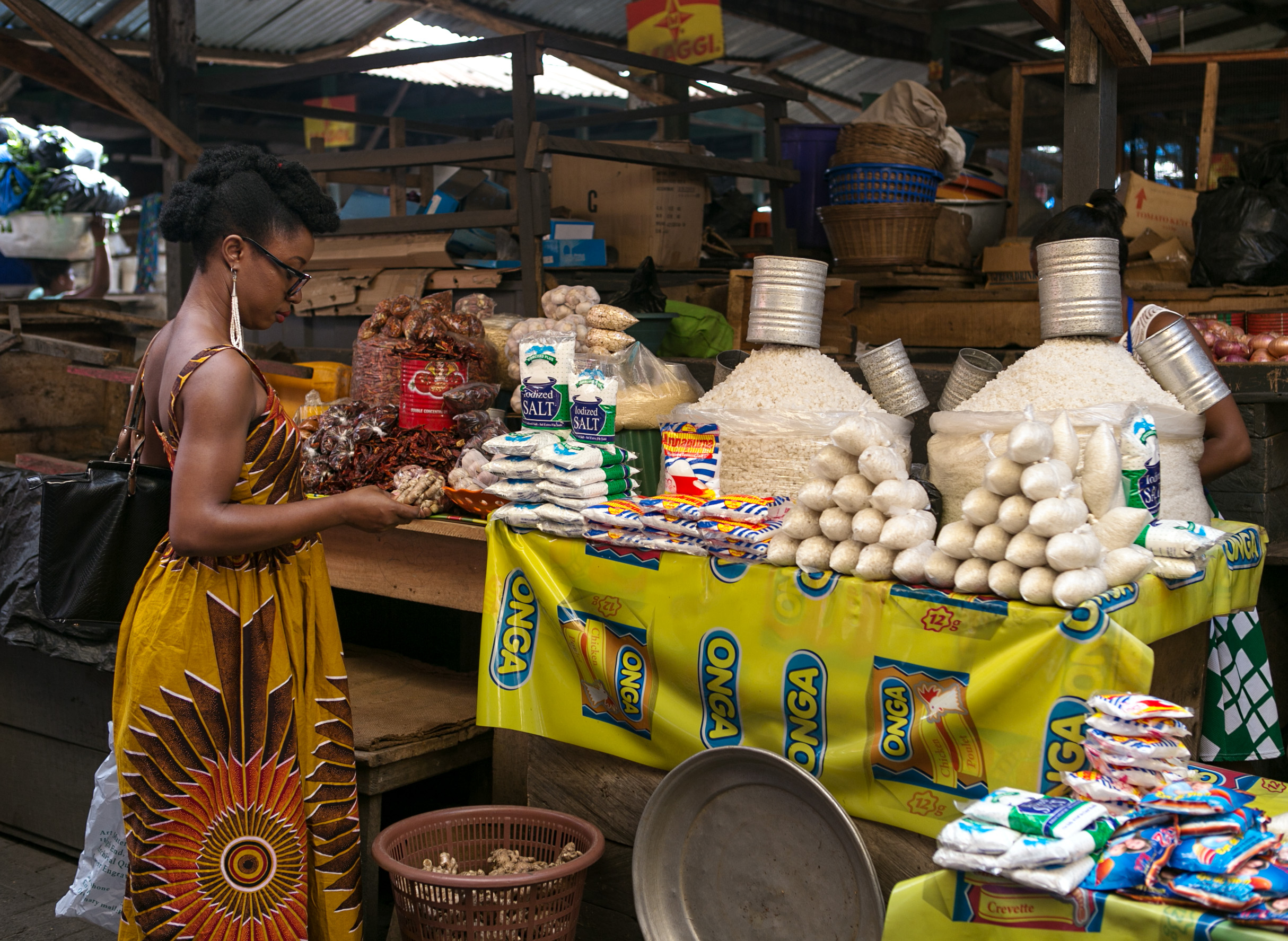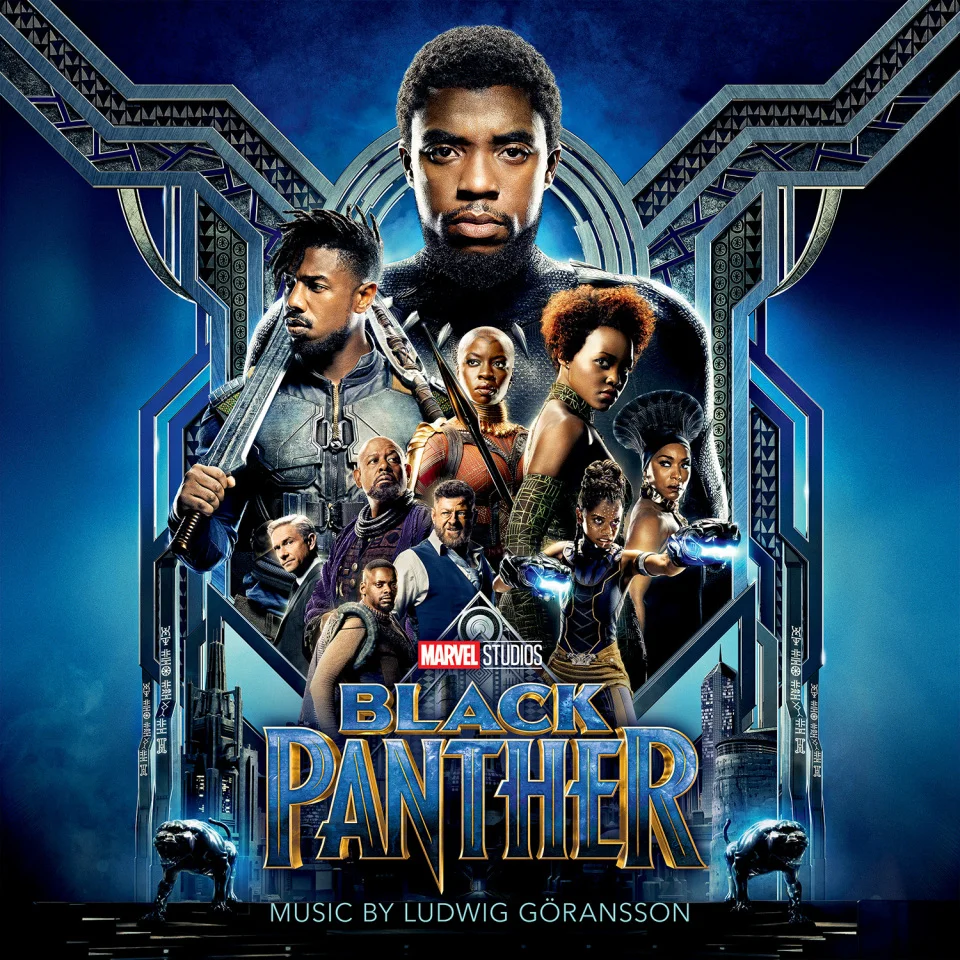A Guide Through 5 MarketPlaces In Accra
My earliest memory of seeing and being aware of a market was at Tuesday market ( JuFor Jaanor) a rather popular local market in the suburbs of Mamprobi where I was born and raised. I don’t seem to remember much about the experience but I do remember holding my mother’s hand as she haggled with the market women for best price of produce which were displayed on stretched out jute mats. Much later in my teens, Makola and Slahaa market and I became acquainted after my father rented one of the commercial stores in Okaishie. Such a stark difference between the two markets, that much I remembered. Then in my early twenties the great Agbogbloshie shoved it’s way into my path almost intrusively. My stepdad had great love for fresh fruits and vegetables.
All the above mentioned markets are uniquely different in their own ways even though one can discover certain similarities between them; the clamour of buying and selling, human and vehicular traffic. Their differences however slight lies in food stuffs pricing, access to market, populace, product uniqueness and hygiene. Anytime you are in Accra check out the markets listed below as a buyer or curious tourist, don’t forget to pick up a bottle of water, beach hat and a face towel with a sprinkling of human patience.
Makola (Mokola as written on the street sign near the Ghana Post Office)
Makola is the biggest and renowned local market & shopping place in Accra spanning more than 15-20 km long about same wide. There are different entry points into this market hub but my favourite is to use the John Evans Atta Mills High Street, make a right turn at Ghana Commercial Bank, past the Children's Library where I used to bury my nose into Tintin & Asterix comics, turn another right, straight on and you are there. There’s no mistaking the market, the populace immediately increases in number and you immediately know you have reached your destination.
Makola has everything, with perhaps the exception of automobiles but yes it’s a hub of have-it-all for imported and local products. From pharmacies to quack doctors, plastics, food, vegetables and fruits, books and stationary, shoes and clothing, skincare and haircare products, jewellery ( both fake and authentic) traditional wear, dried bat and even juju ornaments! From as early as 6am, most vendors have set up in the hopes of catching the early buyer but most shops open by 7am and by 6pm shopping activity reduces to a trickle. Makola has treasures stored in every nook and corner. I remember two weeks ago when I was on the hunt for a particular type of plastic packaging. The corners I had to take to find that packaging, unbelievable! That’s the beauty of Makola. There’s alleys and nooks filled with more shops aside the usual street-facing shops.
The market is also segmented into different categories. Behind the Rawlings Park ( named after our former President JJ Rawlings) which is a car park which has been overtaken by exuberant hawkers, you will find the African print textile merchants whilst on the other side of the park are cosmetic shops filled with various skin and haircare products. Right in-front of these beauty shops are second-hand clothing hawkers stand in the hot sun holding up all manner of clothes and accessories. You might get a few of these being thrust in your path to get you to spend. Just shake your head and pass by.
There’s also the plastics hub of the market where you can find a huge array of plastic products from buckets, plates, toys, containers to feeding bottles in different colours, sizes, quantity and quality. It’s an ideal place to bulk buy plastic products especially if you intend to give them away as souvenirs or wedding gifts. Looking for slippers or shoes? No worries, there’s even a place for that. There’s no monopoly at Makola market which makes it cheaper to shop from there. Most of these segmented areas are found in the Okaishie area of the market. Okaishie has more street hawkers who are constantly yelling out, ‘Ohema ! Customer! Sweetheart! just to catch their next buyer’s attention. They are very persuasive, mind you.
Chinese imported products are lush at Makola market just like in every other market globally. There’s a fake copy of almost every designer bag or shoe displayed in shops and on the streets so one must be careful before making a choice.
31st December Women’s Market established by Nana Konadu Agyeman Rawlings, wife of our former President mentioned above is also a key part of Makola. It’s a gigantic shed housing many different merchants but majority of whom are textile vendors. It’s your go-to for textiles ( tie & dye, school uniform fabrics & African print textiles) vegetables, meat, spices and other produce. It’s easy to get lost in the twists and turns of the slapdash of wooden sheds which serve as shopping stalls. The floors are uneven so wear sturdy shoes (not beach slippers as someone can easily step on the back of it and oops!) Seamstresses and tailors have set up shop in this space for bespoke tailoring. So much to discover here.
During my last trip to Makola I was stunned to discover that the Makola Mall had been completed and street hawkers who used to sell on the pavements were no more. Thanks to the annual efforts of the Accra Metropolitan Assembly to reduce the chaos in the market as well as maintain a cleaner market area. I sincerely hope this is kept up and not a short-term political attempt at pleasing the electorate. That area actually looked clean. If you are driving to Makola, it’s best to park at either the SIC mall and pay GHC4 an hour or park at the parking complex opposite Barclays. If you attempt to park at Rawlings Park, you will have a headache trying to get out of that overly packed space. It’s absolutely insane in there. Last I heard, SSNIT had plans to turn that space into a multi-storey complex for cars and shops.
Makola is relatively cleaner than most markets but still watch out for scooped out gutter waste left on the roadside calmly awaiting garbage truck pickup. There are places of convenience in the market with modern toilets which are regularly cleaned out but usage comes at a fee of GHC1 for doing Number 2 and GHC0.50 for the urinal.
Madina Market
This market is not as large as Makola but is similar in content with respect to food products and household goods. Access to this market isn’t child’s play and after two visits I swore never to drive there again. Parking is almost impossible so it’s best to Uber your way there or pick a local taxi. The frenzy of hawkers, truck pullers, female porters (kaya yei), irate tro-tro and taxi drivers is multiplied in this market which has less defined structures in comparison with Makola. Delve into the inner parts of the market and you will find more organised stalls.
Produce from Koforidua, a popular farming district in Ghana often ends up here at Madina before other markets especially on their market day which is Wednesdays. A market day is when abundant truckloads of fresh produce arrives at a particular market straight from the farm, it’s a day to find almost any desired vegetable or fruit in it’s best state.
Madina is a slightly pricier market as compared to Makola which could be attributed to most merchants sourcing their products from the main Makola markets where imported Chinese products are mostly offloaded. Food vendors at the main entrance to the market also price higher due to their favourable position so you are better off entering the market itself for best price.
Agblogbloshie
The frenzy at Madina is multiplied 20x at the Agblogbloshie market. Access is a real pain as you get to battle with the residents of sodom & gomorrah ( yes that’s a real place ), a few cattle and goats crossing liberally without a herdsman and of course incensed short-sighted drivers. It’s not a pleasant experience when trying to find a place to park. It’s best to go with a public bus or taxi.
What I love most about this market however is the abundance of mounds of fruits, lush herbs ( parsley, dill, mint and rosemary), rosy-cheeked tomatoes and sunset orange carrots and many other vegetables which can be found on almost every corner.
The produce to this market comes from farms in Northern Ghana and Burkina Faso and eager market women flock here to purchase to stock up their shops in other parts of the city. Caterers and other food vendors do same because of quantity and favourable price.
Dried Cayenne Pepper in a metal container
In every market, produce are sold in reused metal containers especially the margarine and tin tomato tins. These are the measurements by which produce are sold and not by weight as in some markets. Olonka or America Ts3nsi ( American container) is the biggest container/measurement . The bigger the container the pricier your foodstuffs. Most of these containers are used to measure food stuffs like beans, grains, spices and other cereals. Sometimes it's plastic buckets which hold tomatoes or onions.
The last time I was there, the hygiene at the market was nothing praise-worthy. It really could be better. During the rainy season, it’s best to avoid this market due to possible trudge through shoe-sticking mud. I sometimes spend more time looking on the ground in a bid to avoid rubbish whilst sometimes skipping puddles like a five year old.
The best time to avoid the frenzy is to come real early in the morning if you intend to shop there, real early like 5am. Seriously though. It’s the best time to get fresh ingredients, be less sweaty and have an easy parking space.
Slahaa Market
This market is well-known for fresh fish due to its proximity to the Jamestown beach. It’s a small market which is right after the Ghana Post Office building. Access to the market isn’t as stressful as Agblogbloshie due to it’s size but careful you don’t park in a no-parking zone, tire-clamping is common. The usual food produce can be found displayed in this market which is structured in one long stretch instead of stalls. I love how it’s easy to walk through the market to the Jamestown township where you can find very traditional snacks like nkatie cake , akooshi , aduulee etc. You just might come across the cooking of different types of shell fish.
The fish sold at Slahaa market is relatively cheaper than what’s sold at Makola, you must possess bargaining skills. That’s a skill to have for every local market. For e.g tomatoes, peppers, okro, garden eggs etc are arranged in little mounds and these mounds are priced between GHC1-2 per mound. The price on this mound can change depending on its seasonability. So if you want to buy 3 mounds of pepper for example, you can offer to pay GHC5 for the three mounds instead of GHC6. You save GHC1 that way for something else.
tomatoes in mound
Don’t also be shy of asking for ntusuor ( hope I spelt that right) which means an extra topping up. Works all the time.
smoked fish on display
Adenta Market
Adenta Market
My first time seeing this market was one of bewilderment. “Where's the market?” I asked a nearby coconut seller. He pointed at the mall-like structure. Oh you don’t say! Adenta market is housed in a local mall on the ground floor level with well arranged stalls which the market women have occupied. It’s actually less stressful as compared to all the other markets, just smaller in size. But it also has every local produce. Parking is easy and available. I don’t feel like hurrying to finish my shopping when there because of low human traffic. Price wise it’s about the same as Madina and Makola, depending on what you are purchasing. The market serves the Adenta metropolitan area but it’s surprisingly not as busy.
local produce
Their market day is every Friday. The market shares the same compound as GCB Bank and SSNIT Clinic. So if you ever run out of cash, you know where to go.
Well, these are some of my favourite local markets in the city whenever I want to buy in bulk and store up for later use to also reduce my food groceries expenditure for the month. Much cheaper that way. But there are also mini-roadside markets which are in almost every suburb or town to meet any emergency; unexpected dinner guests for example. There are so many other markets not mentioned here like, Kaneshie market, Osu Night Market, Dome Market etc. Most markets are named after the location they are built in. For the modern type of markets we have Koala, Marina Mall, ShopRite, ShopnSave, MaxMart and CityDia but often times one misses the sights, sounds and buzz of the local market.
I remember asking for a market during a trip to Dubai and the taxi taking me to a shopping mall. I asked where the market was, he said, "this is it"! I burst out with laughter! But truly it was just like Makola but within a beautiful well-structured building which looked just like A&C mall. The shops in the mall carried pretty much fake designer products ( perfumes, watches, bags etc) and other ethnic treasures. I think I was more eager for the dusty sweltering heat feeling of walking through a traditional souk.
I hope this post has been useful! I would love to know which market in Accra or perhaps Ghana is your favourite or least favourite and what your experience has been over the years. Don’t forget to share to someone who would be appreciative of it as well.















